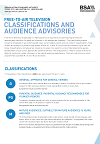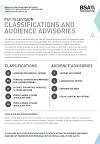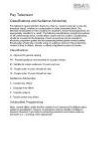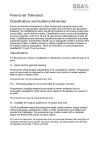Guide to safe viewing and listening
There are some great tools you can use to keep viewing and listening safe for you and your whānau. See this short video to get started.
Programme classifications and audience advisories
Broadcasters of free-to-air TV and pay TV programmes (except news, current affairs, sports and live content) must show appropriate programme classifications, and consider the use of audience advisories if content is likely to disturb, distress or offend. For radio, the requirements relate to audience advisories. This helps audiences to make informed choices on what they and children in their care should watch or listen to.
Timebands and children's viewing/listening times
Free-to-air TV
On free-to-air TV, children's normal viewing times usually run until 8.30pm (though times may differ during weekends and school holidays). Different classifications can play at different times throughout the day and evening, referred to as timebands.
M (Mature Audiences) content can only be played during the day on weekdays when children are at school, and after 7.30pm. M content cannot be shown during the day on weekends, or school or public holidays. We refer to 8.30pm as the ‘watershed', after which programmes rated 16 can be screened. Programmes rated 18 can only be screened after 9.30pm. The classification guide above explains the timebands for each free-to-air classification.
Pay TV
Because of the special choice subscribers make in paying to receive broadcasts, pay TV has had a different classification environment from free-to-air TV. The classification labels are consistent across both. But pay TV does not have timebands, as it has long-established audience expectations over the promotion and use of parental locks, classifications and advisories. Essentially, this means subscription channels such as Sky can broadcast programmes at any time of the day with the expectation that classifications and advisories are used and parental locks are promoted.
Radio
Radio doesn’t have a classification or timeband system. However, radio stations should issue an audience advisory where the content is outside audience expectations. Stations should also moderate their content at times when children are most likely to be listening – in the morning before, and immediately after, school.
Download a classification guide (Free-to-air TV) - Various languages



Download a classification guide (Pay TV) - Various languages








